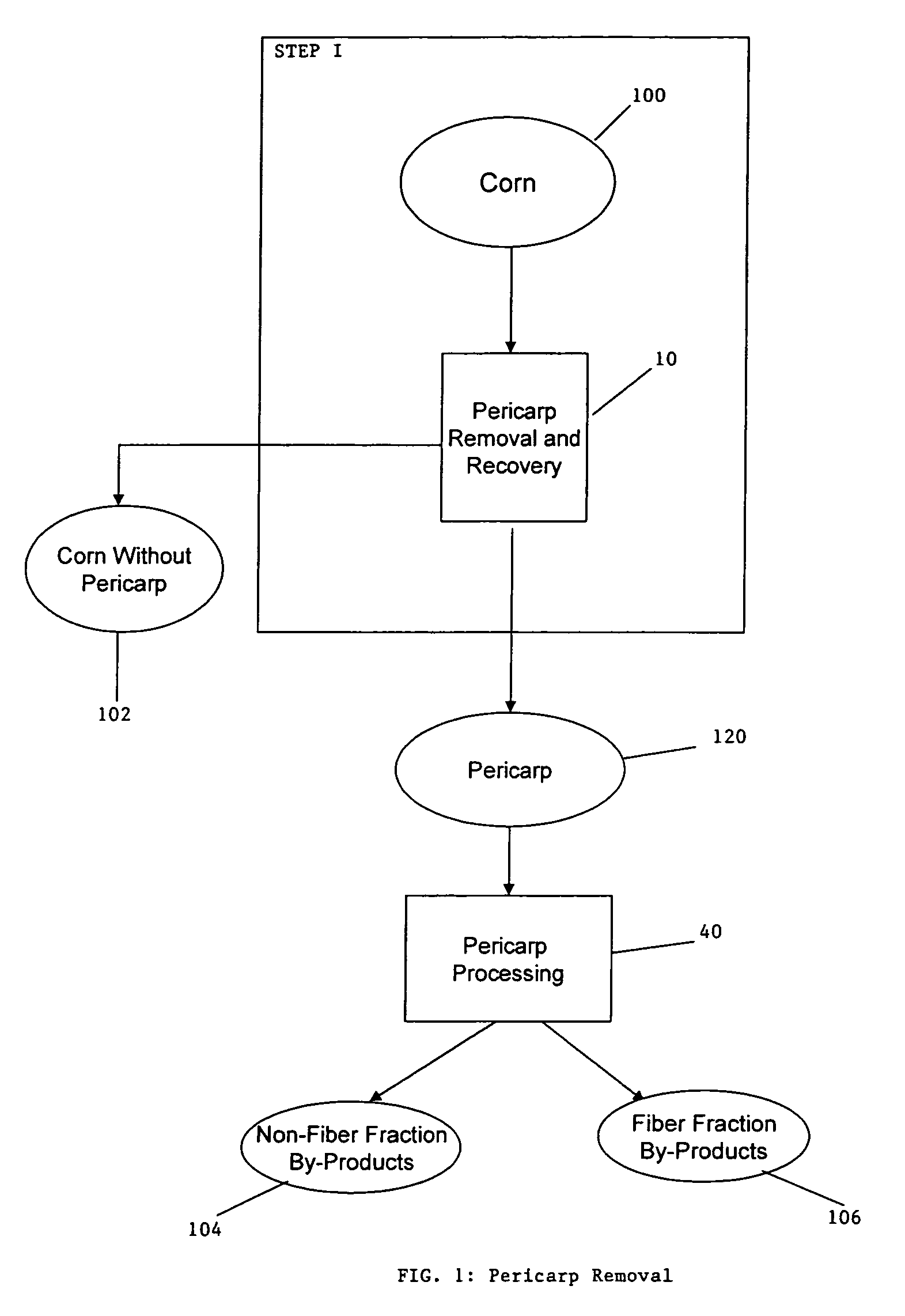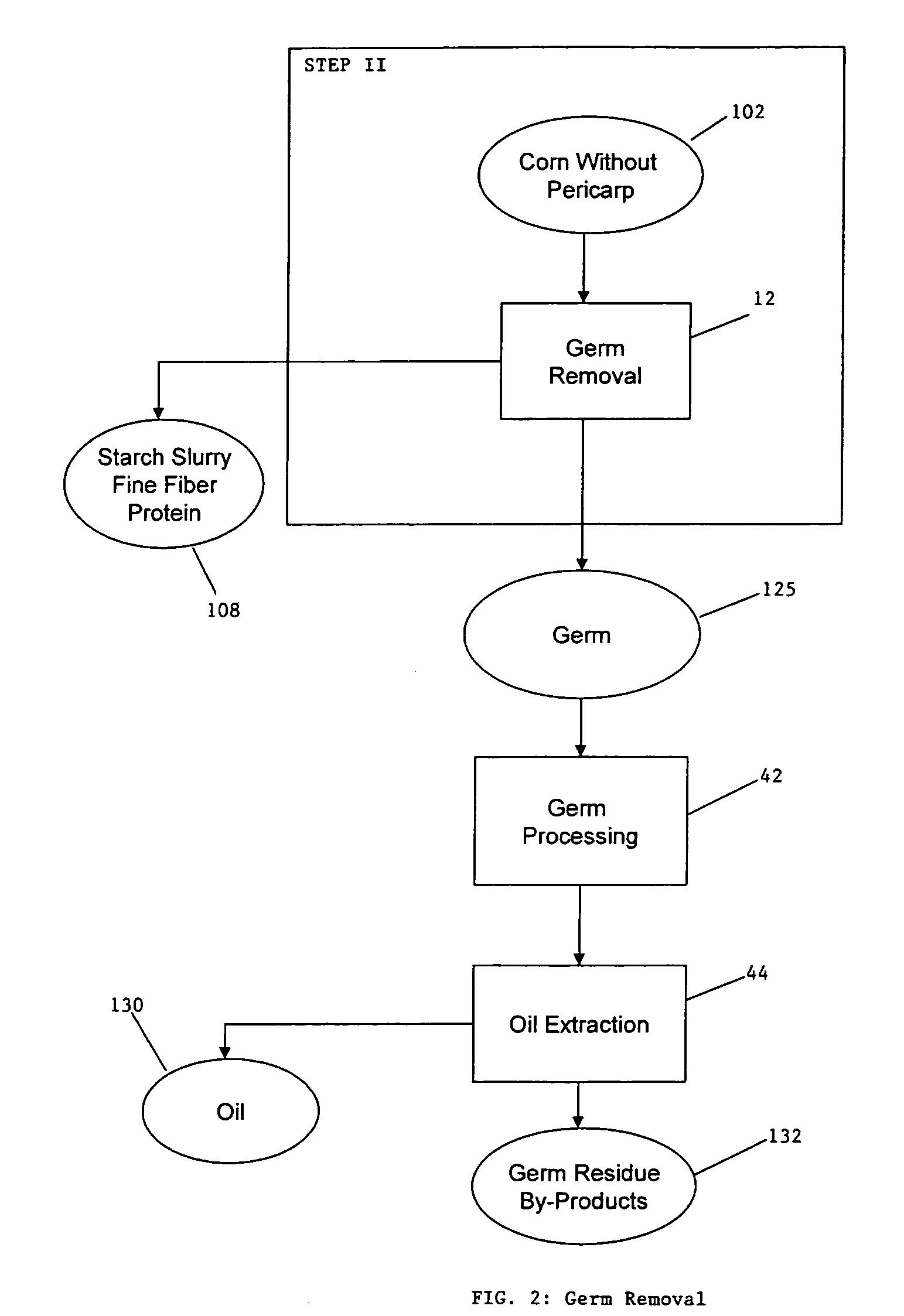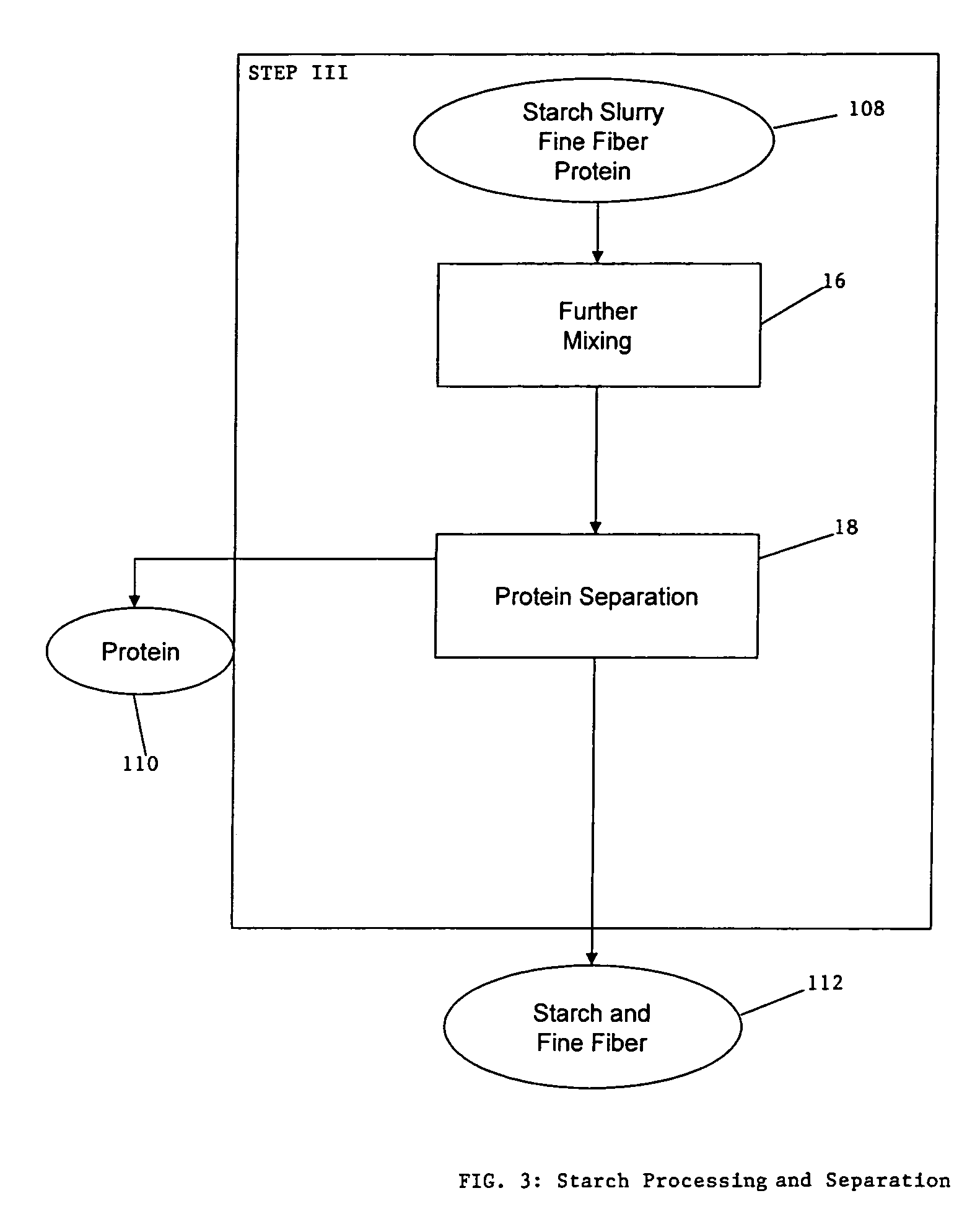Process for the production of animal feed and ethanol and novel animal feed
a technology applied in the field of animal feed and ethanol production and novel animal feed, can solve the problems of over-saturating the animal feed market, loss of starch energy, and acidosis in cattle, and achieve the effect of greater utilization
- Summary
- Abstract
- Description
- Claims
- Application Information
AI Technical Summary
Benefits of technology
Problems solved by technology
Method used
Image
Examples
example 1
Dry Corn Fractionation
[0051]Corn milling tests have been conducted on dry fractionation of corn kernels at ADM. This run consisted of placing 5 kg of corn kernels in a rotating sealed vessel and adding 10% water. The vessel was rotated for 1 hour and then the kernels were removed. The tempered corn kernels were roughly ground through a ¼″ Fitz Comminutor; followed by aspiration through a Kice aspirator with a 1″ differential; the “overs” and “throughs” from the aspirator were sieved at 6, 12, and 20 mesh sizes. After sieving, the large particles from the “throughs” were roller milled twice at a gap setting of 1.1 on the Ferrell-Ross Flaking mill and then sieved at 6 and 12 mesh sizes. The fines (20 mesh or below) were combined prior to analysis. This produced 6 fractions as shown in Table 2 below.
[0052]The results show that the Fines are highly enriched in starch as compared to the native kernels, as well as enriched in NDF (neutral detergent fiber, equivalent to hemicellulose, cell...
example 2
Treatment of Biomass Fibers
[0054]Several biomass fibers have been obtained and have been prepared for experimentation. Wheat straw, rice hulls, rice straw, corn stover and oat hulls were ground in a Fitz Mill Comminutor (Chicago, Ill.) to a uniform size through a ½″ screen. Distiller's dried grains with solubles, corn gluten feed (CGF), and soy hulls were also tested, but not ground.
[0055]The ground biomass fibers were treated with thermochemical treatments to increase biomass digestibility. Two treatments have been conducted, the first treatment with 10 w / w % calcium hydroxide and the second treatment with 2 w / w % ammonium hydroxide.
[0056]In the treatments with 10% calcium hydroxide, I kg (as-is basis) of each of the ½″ ground biomass fibers were mixed with 100 grams of calcium hydroxide in a tumbler reactor and heated with direct steam injection to 145° C. for 30 minutes. The biomass fiber mixtures were removed from the reactor and the masses were recorded.
[0057]In the treatment w...
example 3
Readco Processing of Wheat Straw and Corn Stover
[0064]The Readco processor is a double shaft mixer, which exerts mechanical shear on the material processed, leading also to increased temperatures. It could be an ideal processing device for impregnation of ammonia or other chemicals. Several treatments to increase the digestibility of the biomass samples were planned and they are shown in Table 6. The amount of chemical added could be less if the treatment distributes the chemical more effectively.
[0065]
TABLE 6Readco processing of wheat straw and corn stoverTrt. #TreatmentAmount added as a % of DMTotal Moisture1Anhydrous NH33352Anhydrous NH36353CaO2.5354CaO5355CaO10356NaOH and H2O25 and 3507NaOH and H2O22.5 and 1.5508NaClO200 ppm309NaClO100 ppm30
[0066]Those skilled in the art shall appreciate that the present invention provides a method of processing corn kernels to obtain a high proof (from about 180 to about 190 proof) ethanol and a modified animal feed.
PUM
| Property | Measurement | Unit |
|---|---|---|
| temperature | aaaaa | aaaaa |
| temperature | aaaaa | aaaaa |
| temperature | aaaaa | aaaaa |
Abstract
Description
Claims
Application Information
 Login to View More
Login to View More - R&D
- Intellectual Property
- Life Sciences
- Materials
- Tech Scout
- Unparalleled Data Quality
- Higher Quality Content
- 60% Fewer Hallucinations
Browse by: Latest US Patents, China's latest patents, Technical Efficacy Thesaurus, Application Domain, Technology Topic, Popular Technical Reports.
© 2025 PatSnap. All rights reserved.Legal|Privacy policy|Modern Slavery Act Transparency Statement|Sitemap|About US| Contact US: help@patsnap.com



